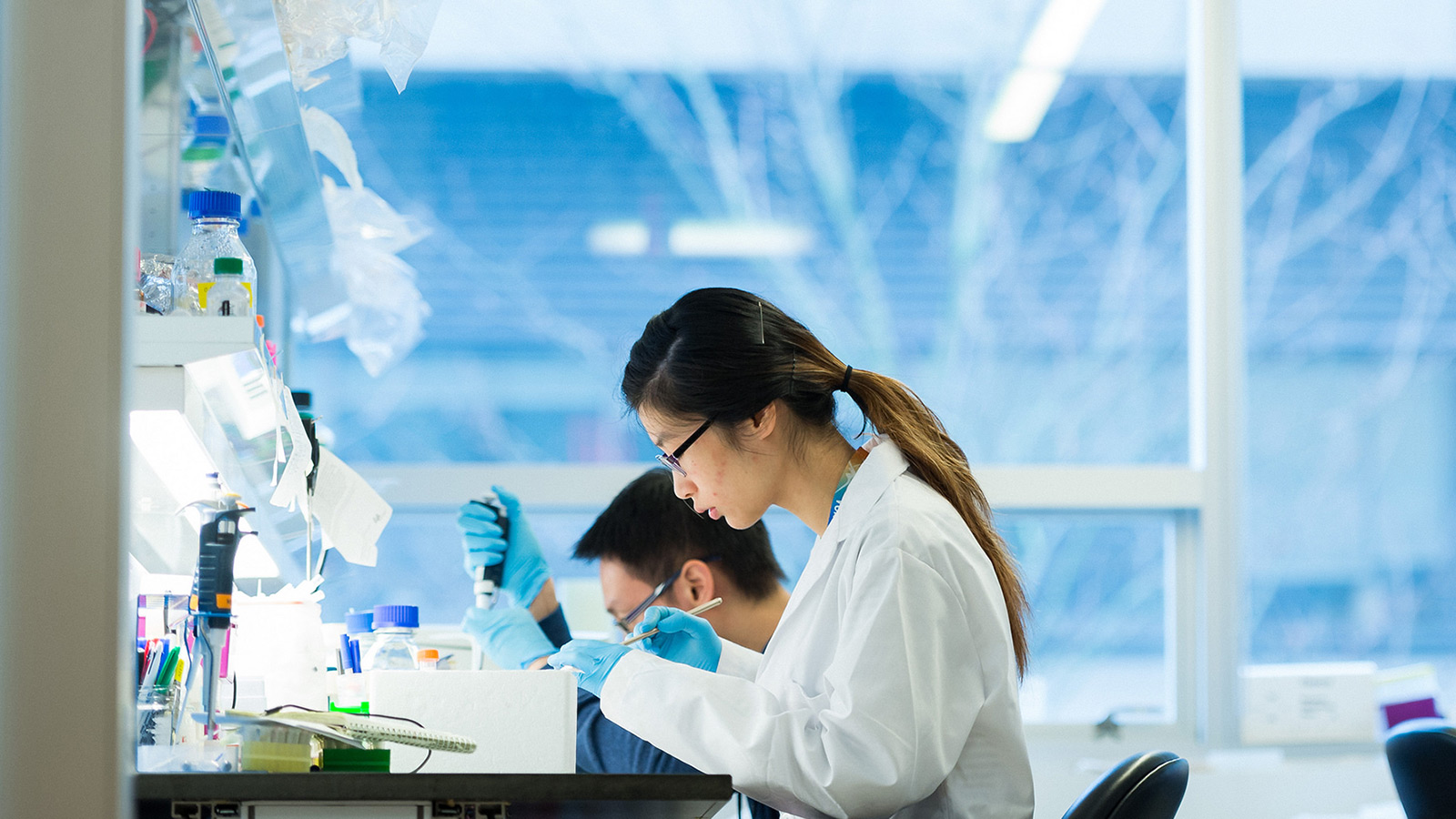UBC-grown biotech leads global pandemic efforts
April 26, 2021

April 26, 2021

Millions of Canadians have received the Pfizer-BioNTech COVID-19 vaccine, but what many may not realize is that a key component of the injection was developed right here at UBC.
Acuitas Therapeutics, a UBC spin-off company co-founded by Dr. Pieter Cullis, developed the lipid nanoparticle technology that allows the Pfizer-BioNTech mRNA vaccine to enter human cells.
“Two years ago, I thought I had reached the apex of my career when we developed a medicine for a genetic disorder that works extremely well,” says Dr. Cullis. “But to have this sort of thing happen, it’s like a one-in-a-million possibility. And the impact that it is having, it’s putting Canada on the map for making an enormous difference to global health.”
Acuitas is among a growing number of UBC spinoff companies that are developing cutting-edge treatments and potential cures for human diseases, all while earning global recognition for their ground-breaking work. Others include Precision NanoSystems and AbCellera.
AbCellera began at UBC in 2012 with only six employees, including founder and now CEO Dr. Carl Hansen—formerly a professor of Physics and Astronomy at UBC. Now the company, which pioneered an antibody discovery platform, is one of the fastest growing and most valuable biotech companies in Canada, recently partnering with pharmaceutical giant Eli Lilly and Co. to develop an antibody treatment for COVID-19.
Precision NanoSystems, developed through a collaboration between Dr. Hansen and Dr. Cullis at UBC, is leveraging its cutting-edge biomanufacturing platform, with support from the federal government, to build one of Canada’s first large-scale manufacturing facilities capable of producing mRNA vaccines and other genetic medicines domestically.
The common theme amongst each company? They were all began at UBC, first as research in university laboratories and then as start-up companies. The university provides entrepreneurial support to researchers who have technology determined to have a potentially high societal impact that would be best realized through commercialization.
UBC researchers are also creating biotech companies that are helping to drive health innovation and fuel Canada’s economy. For example, Notch Therapeutics, co-founded by Dr. Peter Zandstra, is developing a pipeline of cellular immunotherapies for treating cancer and other diseases and recently raised USD$85 million in venture funding.
For UBC Vice-President Health Dr. Dermot Kelleher, the pandemic has shone a spotlight on the critical role emerging biotech companies are playing in developing safe treatments for diseases, including COVID-19.
“We still have a long way to go, but the pandemic has demonstrated what can be accomplished at an accelerated pace,” says Dr. Kelleher. “As we turn towards recovery, we have an unprecedented opportunity now to invest in B.C.’s biotechnology sector and to accelerate scientific discoveries into new drugs and treatments more effectively and more efficiently for other diseases such as cancer, diabetes and heart disease.”
Investing in B.C.’s biotech sector will reduce the time and cost for new therapeutics, devices and diagnostics to move through the development pipeline and reach patients faster, as well as create employment opportunities for British Columbians, including UBC students and new graduates, says Dr. Kelleher.
“Doing so will boost Canada’s reputation for research and care, enhance collaborations with like-minded scientific groups around the world, attract and retain world-class scientists to B.C., and boost our province’s economy by increasing opportunities for the pharmaceutical and biotechnology sector,” he says. “The result will be improved patient and population health, equity and quality of life, as well as enhanced sustainability of our health care system.”
For Dr. Pieter Cullis, a silver lining of the pandemic is that it has shown how fast new treatments and vaccines can be safely developed with sufficient resources and a sense of urgency.
His hope now is to extend Acuitas’ lipid nanoparticle technology, which delivers encapsulated messenger RNA to enter targeted cells, to be able to treat other diseases. He envisions a future in which patients can receive a vaccine to prevent any number of diseases, including cancer.
“This vaccine application is really just the tip of the iceberg,” says Dr. Cullis. “Almost every disease that you can name, from cancer to Alzheimer’s, could potentially be tackled by mRNA technology. My hope is that Vancouver becomes the world centre for developing these kinds of therapeutics.”
We honour xwməθkwəy̓ əm (Musqueam) on whose ancestral, unceded territory UBC Vancouver is situated. UBC Science is committed to building meaningful relationships with Indigenous peoples so we can advance Reconciliation and ensure traditional ways of knowing enrich our teaching and research.
Learn more: Musqueam First Nation